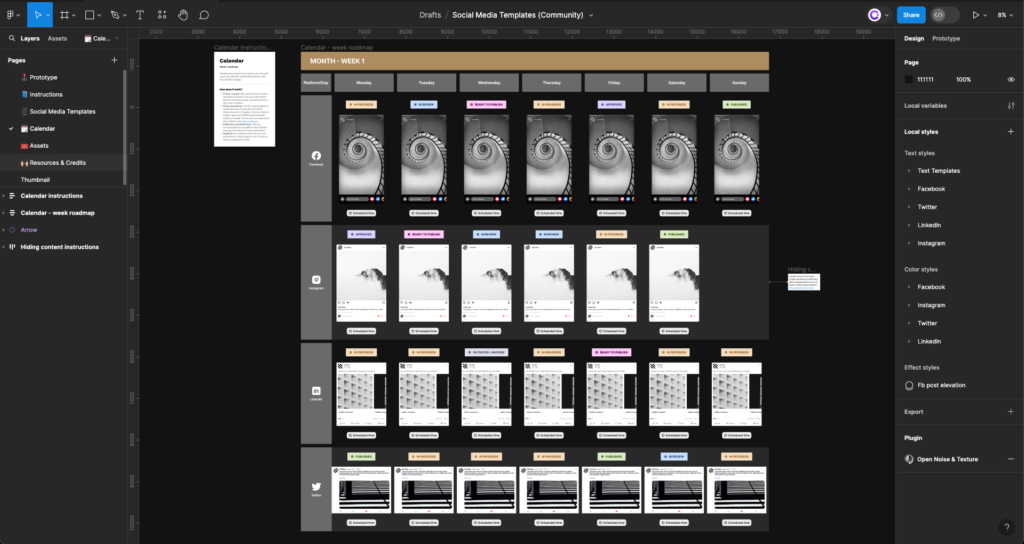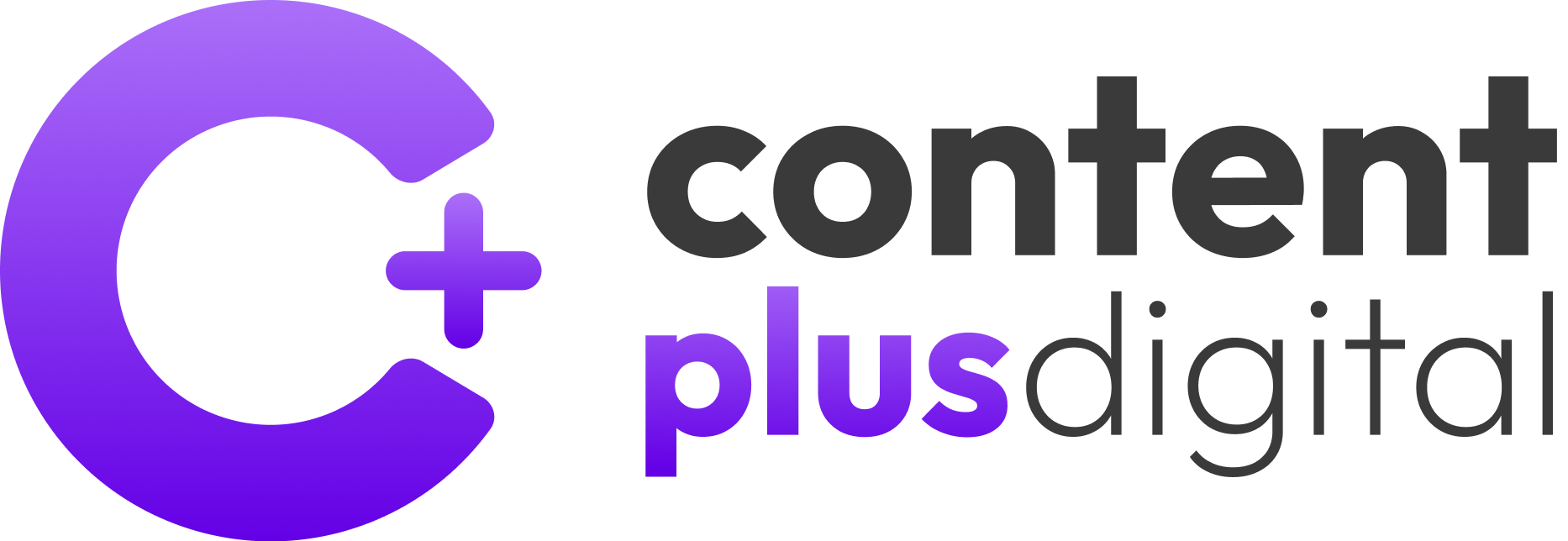What Is a Content Calendar & Why You Need One for Small Business + Free Templates
If you’re a small business owner or part of a small team, you know how challenging it can be to manage your content marketing efforts. Without a clear plan in place, you may find yourself struggling to come up with new ideas, forgetting important deadlines, and failing to reach your target audience. That’s where a content calendar comes in.

A content calendar is a tool that helps you plan and organize your content marketing efforts. It provides a clear overview of your upcoming content, including blog posts, social media updates, email newsletters, and more. By using a content calendar, you can ensure that you’re consistently publishing high-quality content that resonates with your audience.
Building a content calendar may seem daunting at first, but it’s actually a straightforward process. In this article, we’ll walk you through the key elements of a content calendar, share tips for building your own calendar, and provide free templates and tools to help you get started. Whether you’re a small business owner, marketer, or content creator, this guide will help you take your content marketing to the next level.
Key Takeaways
- A content calendar is a tool that helps small businesses plan and organize their content marketing efforts.
- Building a content calendar involves identifying key elements such as topics, formats, channels, and deadlines.
- Free templates and tools are available to help small businesses create and maintain their content calendars.
Understanding Content Calendars

Definition and Purpose
A content calendar, also known as an editorial calendar, is a tool that helps you plan and organize your content strategy. It is a schedule that outlines what content you will be publishing and when. Typically, it is formatted like a calendar or a spreadsheet, making it easy to visualize how you are distributing content over a specific timeframe.
The purpose of a content calendar is to help you stay organized and consistent with your content creation and publication. It allows you to plan ahead, so you are not scrambling at the last minute to come up with ideas or content. By having a plan in place, you can ensure that your content is relevant, timely, and aligned with your overall content strategy.
Benefits for Small Businesses
For small teams and smaller companies, having a content calendar is even more critical. With limited resources, it is essential to be efficient and effective with your content creation and publication. By using a content calendar, you can:
- Stay organized: A content calendar helps you keep track of what content you have created, what needs to be created, and when it needs to be published. This helps you stay on top of your content strategy and ensures that you are not missing any important deadlines.
- Stay consistent: Consistency is key when it comes to content creation. By having a content calendar, you can ensure that you are publishing content on a regular schedule, which helps build trust and credibility with your audience.
- Improve collaboration: A content calendar can help improve collaboration among team members. By having a shared calendar, everyone can see what content is being created and when it will be published. This helps avoid duplication of efforts and ensures that everyone is on the same page.
- Improve efficiency: By planning ahead, you can ensure that you are using your time and resources effectively. You can batch content creation, work ahead of schedule, and avoid last-minute scrambling.
Elements of a Content Calendar

A content calendar is a tool that helps you plan and organize your content creation and publishing process. It can help you stay on schedule, ensure that your content is consistent with your brand and messaging, and keep your team members on the same page. Here are the key components of a content calendar:
Key Components
- Schedule: A content calendar should include a schedule that outlines when each piece of content will be published. This can help you ensure that you are publishing content at regular intervals and that your team members know when they need to have their work completed.
- Editorial Plan: An editorial plan outlines the topics, themes, and messaging that you will cover in your content. This can help you ensure that your content is consistent with your brand and messaging and that you are covering topics that are relevant to your audience.
- Platforms and Channels: A content calendar should include the platforms and channels that you will use to publish your content. This can help you ensure that you are reaching your audience on the channels where they are most active.
- Content Types: A content calendar should include the types of content that you will create, such as blog posts, videos, social media posts, and email newsletters. This can help you ensure that you are creating a variety of content that appeals to your audience.
- Frequency: A content calendar should include the frequency at which you will publish content. This can help you ensure that you are publishing content at regular intervals and that your audience knows when to expect new content.
Choosing the Right Format
There are many different formats that you can use to create a content calendar, such as spreadsheets, online tools, or even a whiteboard. The key is to choose a format that works best for your team and your workflow. For smaller teams and companies, a simple spreadsheet or online tool may be sufficient. However, larger teams may benefit from more advanced tools that offer collaboration and project management features.
Integrating Various Content Types
A content calendar should include a variety of content types that appeal to your audience. This can include blog posts, videos, social media posts, and email newsletters. By including a variety of content types, you can ensure that you are reaching your audience on the channels where they are most active and that you are providing them with valuable content that they will want to engage with.
Building Your Content Calendar

Creating a content calendar is a crucial step in your content planning process. It helps you organize your content, set deadlines, and assign responsibilities to team members. In this section, we’ll discuss the three key aspects of building your content calendar: setting goals and objectives, content planning and scheduling, and assigning roles and responsibilities.
Setting Goals and Objectives
Before you start planning your content, you need to define your content goals and objectives. These goals and objectives should be aligned with your overall marketing strategy. They should be specific, measurable, achievable, relevant, and time-bound (SMART). For example, your content goals could be to increase website traffic by 50% in the next six months, or to generate 100 leads per month through your blog.
Content Planning and Scheduling
Once you’ve defined your content goals and objectives, you can start planning and scheduling your content. Start by brainstorming content ideas based on your goals and target audience. You can use tools like Google Keyword Planner or BuzzSumo to find popular topics in your niche. Then, create a content plan that outlines the topics, format, and distribution channels for each piece of content.
Next, set deadlines for each piece of content and add them to your content calendar. Your content calendar should include the title, format, due date, and assigned team member for each piece of content. You can use a spreadsheet or a project management tool like Trello or Asana to create and manage your content calendar.
Assigning Roles and Responsibilities
Finally, you need to assign roles and responsibilities to team members. Your content calendar should include the name and role of each team member involved in the content creation process. This includes writers, editors, designers, and social media managers. Assigning roles and responsibilities ensures that everyone knows what they need to do and when they need to do it. It also helps you avoid last-minute delays and ensures that your content is delivered on time.
Content Calendar Templates and Tools

As a small business owner, you know how important it is to stay organized and on top of your content creation. A content calendar is a great tool to help you do just that. In this section, we’ll explore some free template options and digital tools you can use to create and manage your content calendar.
Free Template Options
If you’re just getting started with content calendars, using a free template can be a great way to get the hang of things. Google Sheets is a popular choice for content calendar templates, with many free options available for download. Trello and Notion also offer free templates that can be customized to fit your needs. These templates typically include sections for content ideas, deadlines, and publishing dates.

Check out these free Notion content calendar templates
Digital Tools and Software
If you’re looking for a more robust solution, there are many digital tools and software options available. Asana is a popular project management tool that can be used to create and manage content calendars. Google Calendar can also be used to schedule content and set reminders for deadlines. CoSchedule is another option that offers a comprehensive content marketing calendar tool.
Using Figma as a Tool
For those who prefer a more visual approach, Figma is a great tool for creating content calendars. Figma is a design tool that allows you to create custom templates and layouts for your content calendar. You can easily drag and drop content ideas onto the calendar and customize the layout to fit your needs. While Figma is not specifically designed for content calendars, it can be a great option for those who are comfortable with design tools.
Why I Use Figma for Almost Everything
I use Figma for almost everything, from planning out my content, designing thumbnails for the blog post feature images, designing other visual assets and logos, and mocking up new web pages I want to build.
Some of the reasons I love Figma include:
- It is collaborative: If you are working with other people all you need to do is send them a link and they can login and view all the progress. They are also able to leave comments anywhere inside the file so you can get instant feedback without any miscommunication
- It is visual: Instead of having all of your information stuck inside a spreadsheet or different Trello tickets you can have it all in front of you on one page
- You only need one tool: Figma allows you to have everything inside one tool. You can find inspiration and make a mood-board, create a schedule or calendar, and then design your content all in one place

Check out these free Figma content calendar templates
Maintaining and Optimizing Your Calendar

Once you have built your content calendar, it is important to maintain and optimize it to ensure its effectiveness. Here are some tips to help you do just that:
Regular Audits and Updates
Regularly audit and update your content calendar to ensure it remains relevant and effective. This involves reviewing your publishing schedule, content creation process, and marketing efforts to identify areas for improvement. You can do this by tracking your metrics, such as engagement rates and website traffic, and making adjustments accordingly.
Collaboration and Workflow Management
Collaboration and workflow management are essential for maintaining an effective content calendar. This involves clearly defining roles and responsibilities, setting deadlines, and communicating effectively with your team. You can use project management tools such as Trello or Asana to help streamline your workflow and ensure everyone is on the same page.
Measuring Success and Making Adjustments
Measuring the success of your content calendar is crucial for making adjustments and optimizing it for better results. This involves tracking your metrics, such as engagement rates and website traffic, and making adjustments accordingly. You can use this data to identify areas for improvement and make changes to your content creation process, publishing schedule, and marketing efforts.
Overall, maintaining and optimizing your content calendar is essential for ensuring its effectiveness and achieving your marketing goals. By regularly auditing and updating your calendar, collaborating effectively with your team, and measuring success and making adjustments, you can ensure your content is engaging, relevant, and effective for your target audience.
In conclusion, building a content calendar is essential for small businesses and teams. It helps you stay organized, meet deadlines, and assign responsibilities to team members. By following the steps outlined in this section, you can create a content calendar that aligns with your content goals and objectives and helps you achieve them.




